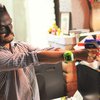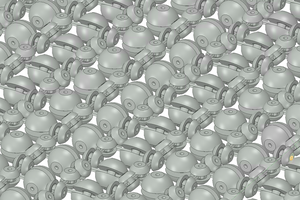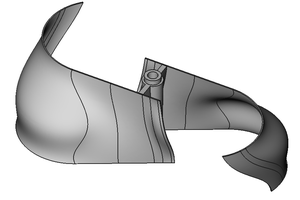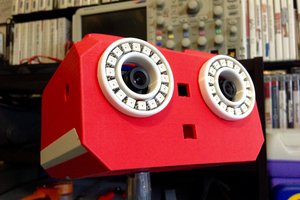The primary requirements I set for this build are:
• Modular Design
• Light & Portable
• Able to lift at least 700g
• Ability to set the end effector in whichever orientation and be sturdy enough to not budge due to gravity, wind or any other natural causes (except natural disasters of course)
Secondary Requirements: (mostly just Light and Portable in more detail)
• The device should not weigh much, preferably less than 5kgs (at its final stage)
• Ability to fold the device into a small form factor, fitting in even laptops bags.
Iteration 1:
For the initial build, I wish it to be a purely mechanical one, but one with a design that can accommodate the motors and other components that I will attach in the later iterations. In this build, I will attach it to the wall beside my bed with the use of nails (yes this won’t be portable, but I am considering it’s fine for the initial model). I don’t expect this iteration to be able to lift more than 200g without the motors.
Iteration 2:
Add the motors and a couple of sensors or cameras to be able to do tasks such as waking me up and act as a stand with the ability to hold heavier objects than my phone. It will be powered directly through the power outlet right next to the bed, which I suppose is there in every household. This iteration will also include something like a vacuum cup to easily attach it to any wall. This will make it a plug and play sort of machine.
Iteration 3 and beyond:
The future iterations could have a gripper at the end and be a much smarter device overall, with the ability to be controlled through a mobile phone or laptop. Hence the name MuDRA.
******I added the suction cup in Iteration 1 itself since I was able to procure it.
Initially, I connected the arms to the suction cup using a makeshift method of rubber bands and some hot glue. However since that wasn't holding well, I decided to go with another approach, for which I used this box that I had lying around. I am not sure how much it cost.
These magnets were a set of 10 pairs, wherein each pair constitutes one magnetic piece and another a metallic piece. I attached two metallic pieces to my phone and four magnetic pieces to the arm. This set of magnets cost about Rs.400.I was most impressed by this suction cup that I bought online for about Rs.400. It came as a set of 6, and although the head of each suction cup is made of plastic they are extremely sturdy for the price.For the pure mechanical build, I decided to go with a torque hinge which is able to be set to any desired inclination and would not change with the weight of the phone or any other device within its range. However, torque hinges were not available in local stores near me and I had to order online where each cost about Rs.500. Since I didn't wish to spend a lot, I was only able to buy two.The following two videos demonstrate how the arm is attached to the wall and side table.
Well, as you can see below, this is how the purely mechanical build of the arm works. I wish to use it as a stand for my phone and also to hold my plate while eating.
However as can be seen in the video, the wood planks do flex due to the load and the torque hinge between the two long arms does seem to be at high stress. I hope to fix these issues with the later iterations, I shall make use of motors and 3d printed parts to take the arm to its next level.
I am also mildly disappointed that I could not make it modular and easily swappable, I believe using custom CADs and getting them 3d printed will overcome this goal.
For the time being, I have halted the build. I wish to get parts 3D printed and buy slightly heavy-duty motors, the ones I currently have don't meet the requirements. I will need money for the same, which currently I cannot afford to spend.
 Sagar Sanjay Shenoy
Sagar Sanjay Shenoy


 finallyfunctional
finallyfunctional
 MW Motors
MW Motors
 ThunderSqueak
ThunderSqueak
 Kevin Harrington
Kevin Harrington
Great Work! Looking forward to seeing you build on this, as well as other projects from you!